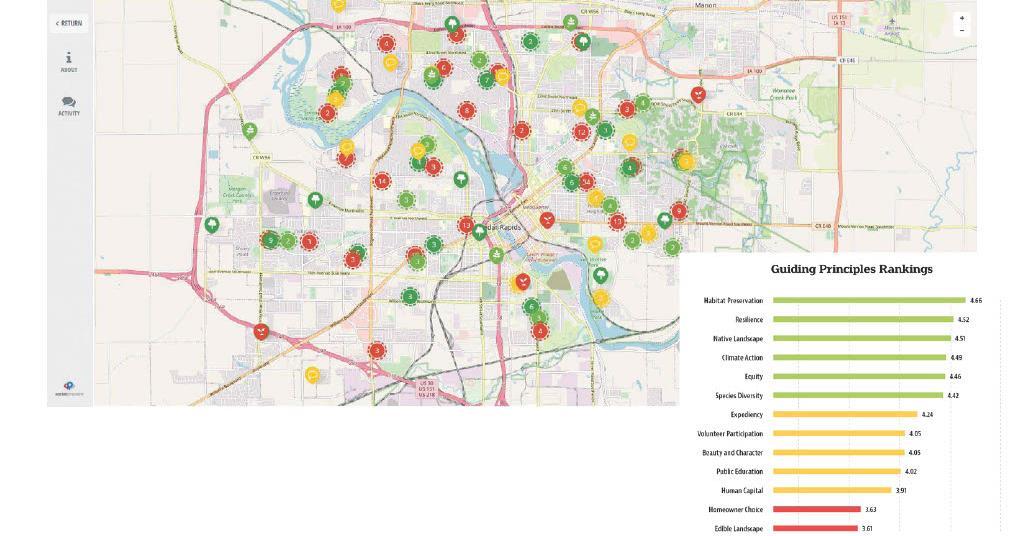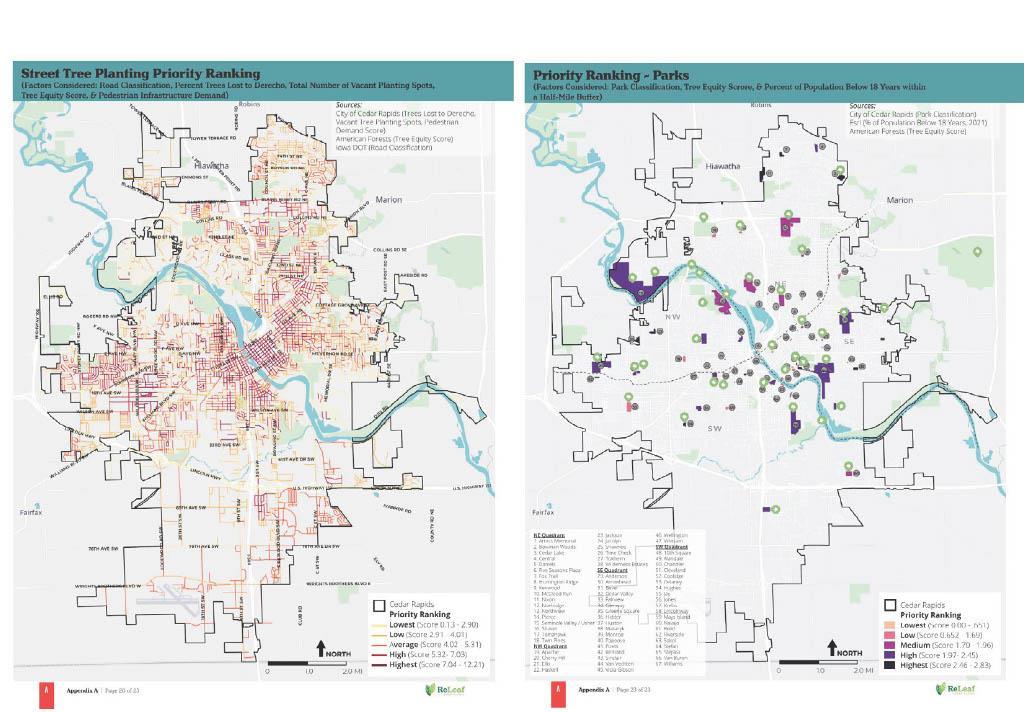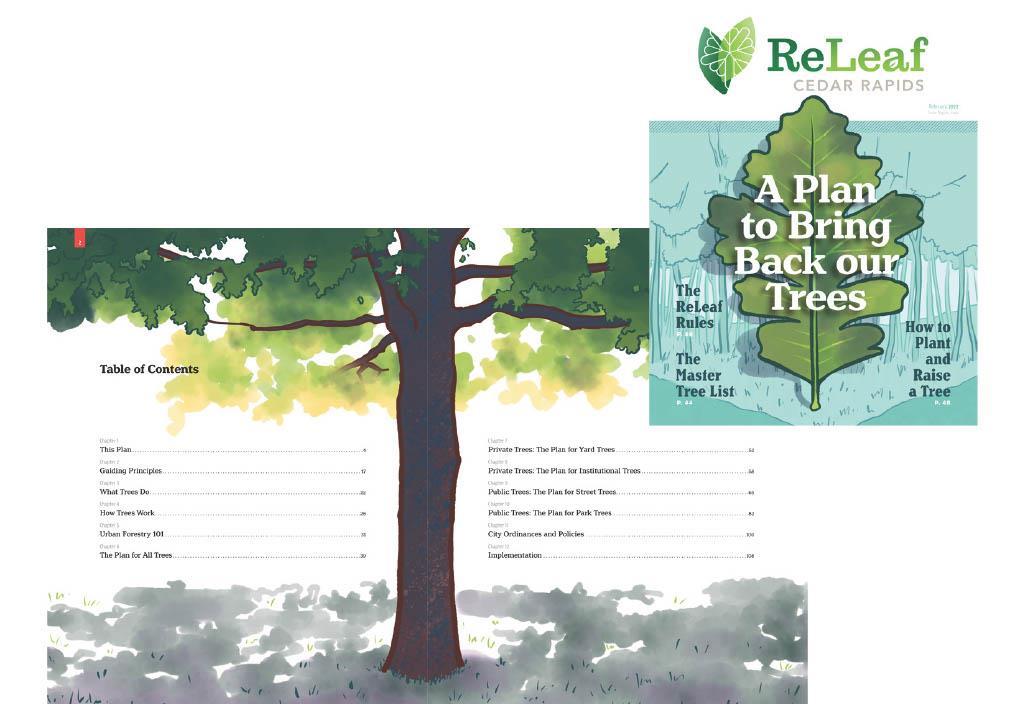
2 minute read
Confluence,Inc.
On August 10, 2020, a straight-line windstorm, called a derecho, swept across Iowa and Illinois. The storms highest windspeeds, exceeding 140 MPH, were recorded in Cedar Rapids. The unprecedented damage left very little of the city untouched and devastated the urban tree canopy. Early estimates indicated some 669,000 public and private trees were lost, equating to nearly 70% canopy loss, in a little over one hour as the storm passed through the city. This project’s purpose is to bring it all back.
Within a week of the storm, City leaders initiated a plan to bring back its trees. An interdisciplinary team of landscape architects, city/urban planners, and graphic designers was formed to create a replanting plan and public education tool that is now known as ReLeaf Cedar Rapids. It is presented online and was widely distributed throughout the community in magazine form, full of information about trees, their value, and the benefits they provide to citizens and the community as a whole. The plan identifies best practices for the planting and care of trees, but also challenges conventions in urban forestry, particularly as they relate to localized diversity and tree spacing.
Advertisement
ReLeaf Cedar Rapids is exemplary in several important ways:
• It responds to probably the greatest urban storm tree-loss event in modern history.
• It incorporates the latest best practices in urban forestry, attempting to correct some misunderstandings that have proliferated nationwide.
• It leverages tremendous amounts of data and analysis to carefully prioritize replanting in a way that reflects a set of principles defined through public process, including equity and habitat preservation.
• It uses a magazine format, highly engaging graphics, and novelistic writing to reach the widest possible audience.
• It was created through a public/private/nonprofit partnership that led to its quick acceptance and adoption.
• It is extraordinarily ambitious in both the number of trees to be planted and its timeline for doing so.
Through a massive, and sustained, public outreach campaign, the planning team vetted thirteen foundational principles and based on public feedback, prioritized those principles to guide the planning process and the resulting recommendations of the plan. Much of this during the heart of a global pandemic utilizing both online and masked, inperson, outdoor polling in underserved parts of the community. Of the thirteen foundational principles, the community identified six principles–including habitat preservation, resilience, native landscape, climate action, and social equity–as highest priority. Combined with extensive and deeply researched investigations into best practices–the principles were formalized as the “ReLeaf Rules” to guide the rest of the planning effort.
The plan document follows the establishment of principles with an illustrated primer on What Trees Do, How Trees Work, and Urban Forestry 101, establishing in readers a baseline understanding of the tremendous value of trees as well as urban forestry fundamentals. It then is broken down into five parts: plans addressing All Trees universally, Yard Trees, Institutional Trees, Street Trees, and Park Trees. It then recommends certain counterproductive City ordinances for modification and ends with a chapter on implementation. And this is all included in the magazine component.
To facilitate the City’s public tree replanting efforts, the landscape architect and planning team, using GIS and other digital technologies, developed a year-by-year planting plan for street trees that was incorporated into the City's existing asset management system and that will guide the prioritized replanting of every tree planned. A similar, prioritized, approach was taken with park trees except that the landscape architect also designed and developed replanting plans for 38 of the City’s highest used park properties. Each of the plans included its own prioritized planting recommendations including individual tree locations and species recommendations.












